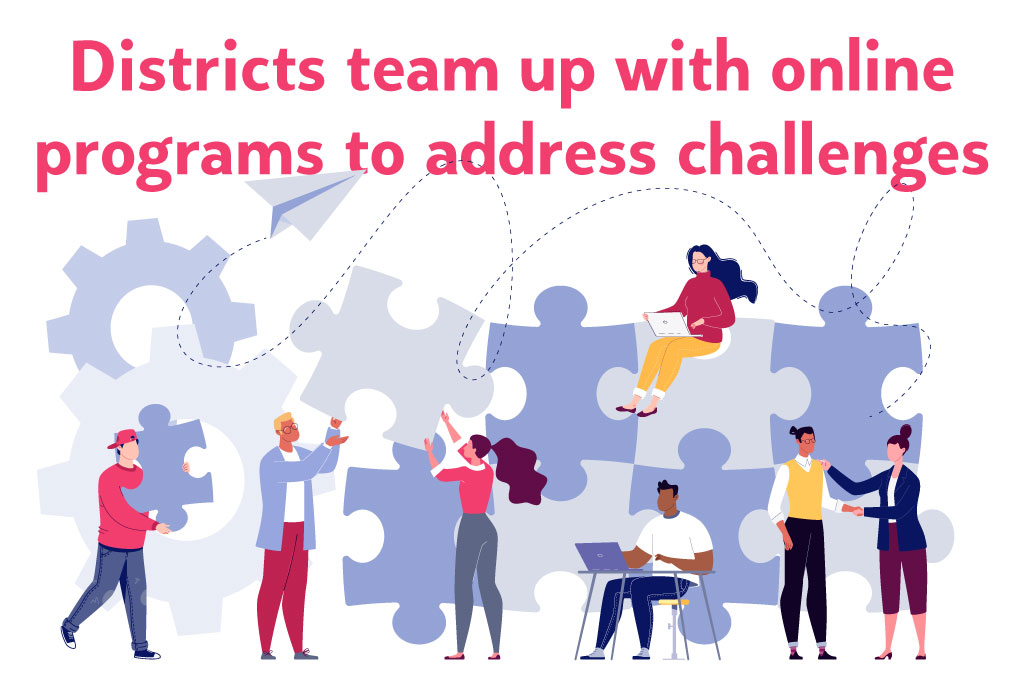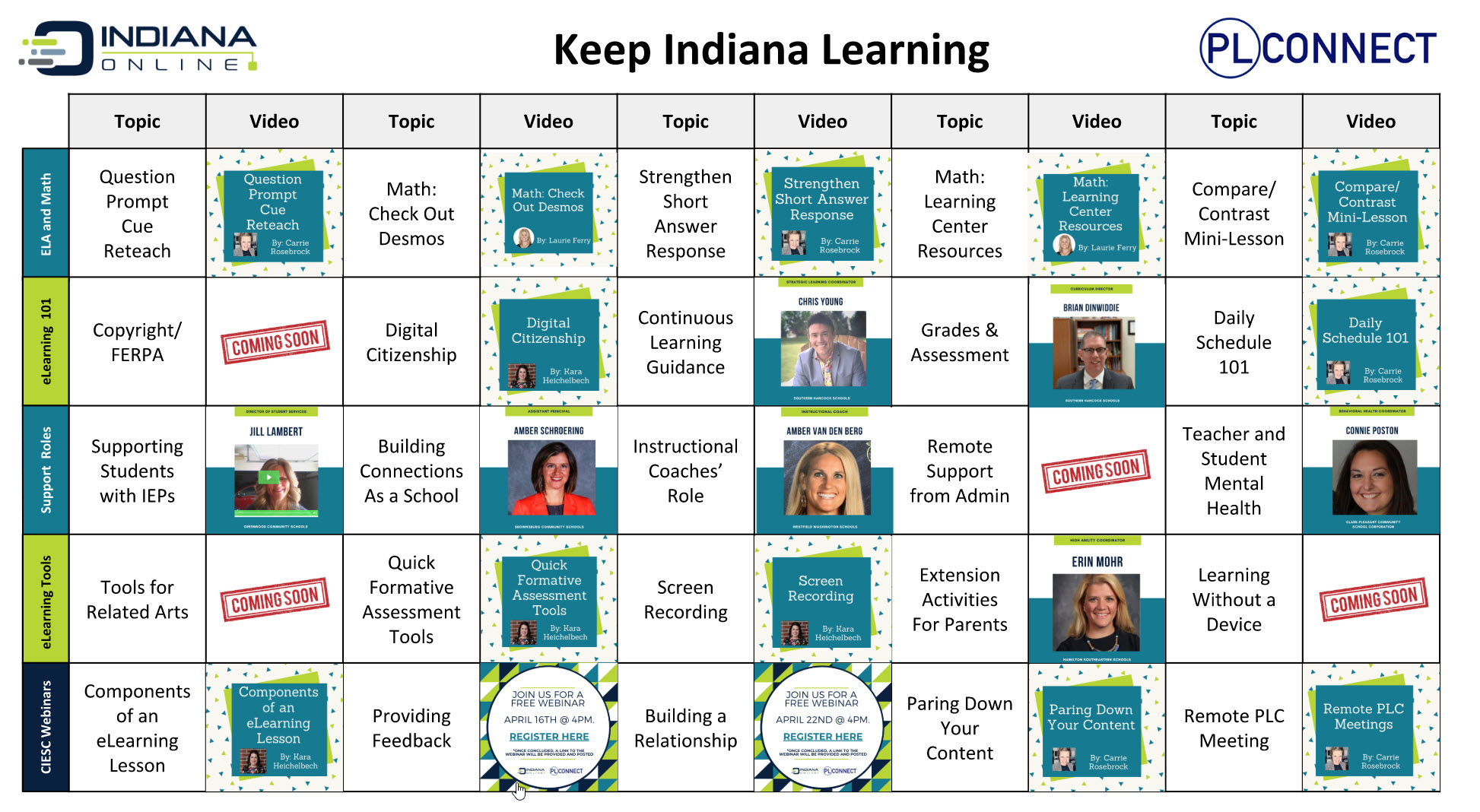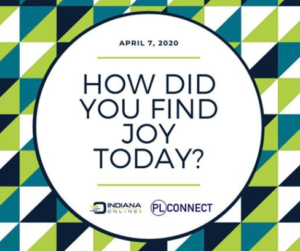2nd in a two-part blog series

Teacher shortages, professional development, and a plethora of other concerns are never far from a district administrator’s thoughts. A trusted, online education program can help lighten the load.
“Online learning has saved us in the era of COVID, the current teacher shortages, and the increased number of graduation pathways,” said Jenny Oakley, director of eLearning & Literacy, Metropolitan School District of Martinsville and an Indiana Online partner. “If we don’t have a teacher for a special course, we can put students in that course online.”
For example, the district does not have an American Sign Language teacher. Students can enroll in that course with Indiana Online so they can still earn their world language credit for their pathways.
In Pennsylvania, the Newport School District has leaned on its partnership with Capital Area Online Learning Association (CAOLA), a VLLA member, and its online learning program to address an open position.
“We have always used online learning to address AP courses, languages, or other courses we do not have the ability to staff either due to our size or other limitations,” said Scott McGrady, director of curriculum, instruction and assessment for the Newport School District. “We continue to explore the CTE courses available to use and find industry certification programs online that may be beneficial to our students and community.”
Meanwhile, in Virginia, Greene County Public Schools turn to Virtual Virginia so they can offer courses with lower enrollments or when a qualified teacher is not available. Recently, the district lost a high school teacher and was unable to find a replacement, so they reached out to its supplemental online providers for help, according to Fox.
“We asked them to assist us in designing a solution so that our students will still have access to high-quality instruction from a highly qualified, licensed teacher,” said JoAnne Fox, online learning coordinator for Greene County Public Schools.
Whether navigating current issues facing schools or developing innovative pathways for future student success, the school district-supplemental online education partnership is helping pave the way.
Communication: the key to a successful partnership
Open, honest dialogue has long served as the standard bearer for good relationships. That holds true, too, for school districts and online education providers.
“Solid partnerships are grown out of effective communication and responsiveness as this is an ever-changing world for educators, students, and their families,” said McGrady. “Continued opportunity for conversation and feedback, flexibility in the program, and setting goals and vision for where the program is headed helps guide practice.”
In addition to communication, mutual problem-solving and regular interactions help solidify positive relationships between districts and program providers. Understanding each district’s unique needs and evolving with them makes for lasting relationships that extend beyond a typical client-vendor exchange.
“Our district and Virtual Virginia have been in a partnership … that started well before the pandemic and will continue for the foreseeable future,” said Bruce Enzmann, virtual learning coordinator of the Office of Teaching and Learning for Virginia Beach (VA) City Public Schools. “In working together, we have found that Virtual Virginia’s ability to respond and resolve challenges for us has helped strengthen our relationship. We appreciate that they have a staff that is available and ready to work with us when we encounter something out of the ordinary.”
Communication, responsiveness, flexibility – the foundation for partnership success and, ultimately, quality education.
Is there a future for supplemental online education?
Yes, Virginia, the future looks very bright for innovative, quality online learning, according to many VLLA members, school districts, and national trends post-COVID.
“When schools were forced to go online, students and families realized there are options to the traditional model of education, and they are now demanding these options,” said Fox. “Many of our students not only performed well in a blended or online environment, but they also developed better balanced life experiences with athletics, service, and employment. All of these are necessary to promote students’ development into well-educated, productive citizens.”
While noting that more students are returning to the classroom after the COVID spike, especially at the elementary level, McGrady predicts online learning will continue to grow slowly but steadily in the future. He points to offering the best education that is suited for each student’s unique needs.
“I continue to try and drive conversation about the “why” … to be sure we are making the decision that best suits each scenario,” said McGrady. “While there are many benefits to online learning, we must be sure the fit is right for that student, family, and educational situation. We will continue to focus on making these experiences meaningful and of high quality.”
Districts and online learning providers can certainly agree on that. Creating opportunities so that every student can enjoy academic success is a vision shared by each and forged by strong partnerships.
 Perhaps no profession understands the power of continued education more than educators. Add in a historic event, such as a pandemic, and teachers turned to multiple sources for adjusting to diverse students’ needs.
Perhaps no profession understands the power of continued education more than educators. Add in a historic event, such as a pandemic, and teachers turned to multiple sources for adjusting to diverse students’ needs.



 #4: Stability
#4: Stability




